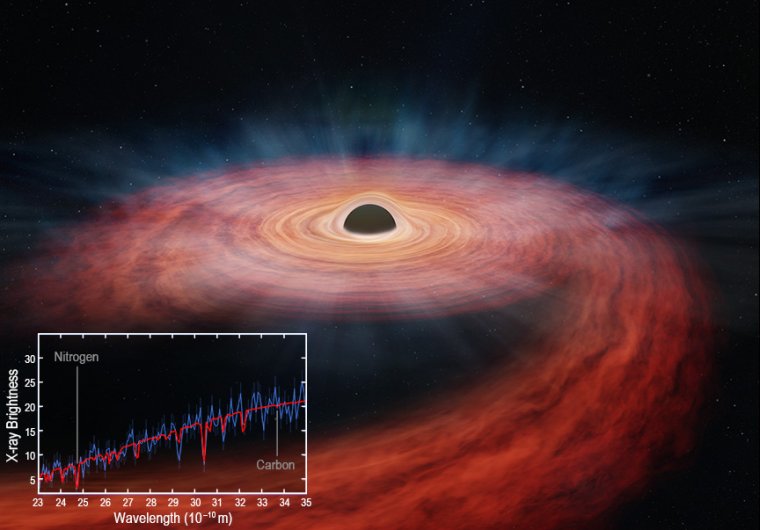Autopsy of a star reveals what was eviscerated by a monster black hole

Enlarge / Ions of nitrogen and carbon show up in the spectrum of X-rays from a black hole's accretion disk. (credit: NASA/Chandra)
Even huge stars are not always safe out there. When the orbit of a star three times as massive as our own took the star too close to a hefty black hole, the black hole's gravity ripped the star's guts out and scattered them across a cosmic crime scene.
Nearly a decade ago, this tidal disruption event caught scientists' attention not only because of its enormity but also because the carnage happened only" 290 million light-years away, which is relatively close to Earth. This event, termed ASASSN-14li, was almost mistaken for a supernova when it was discovered in 2014). While a closer tidal disruption event has been discovered since, ASASSN-14li has continued to draw astronomers because the star involved might be one of the largest, if not the largest, known to have been devoured by a black hole. Now, a new forensic analysis of this event brings more about the stellar victim to light.
Exhibit AWhile the proximity of ASASSN-14li and the cause of the star's death were already known, the research team had to think like cosmic medical examiners to figure out the size of the star. For this, they relied on data from NASA's Chandra and ESA's XMM-Newton X-ray telescopes. When a star is ripped apart by the gravitational forces of a black hole, what is left of the star is heated so much by the intensity of those forces that a flare occurs. Flares like this can be observed in X-rays, as well as visible and ultraviolet light.